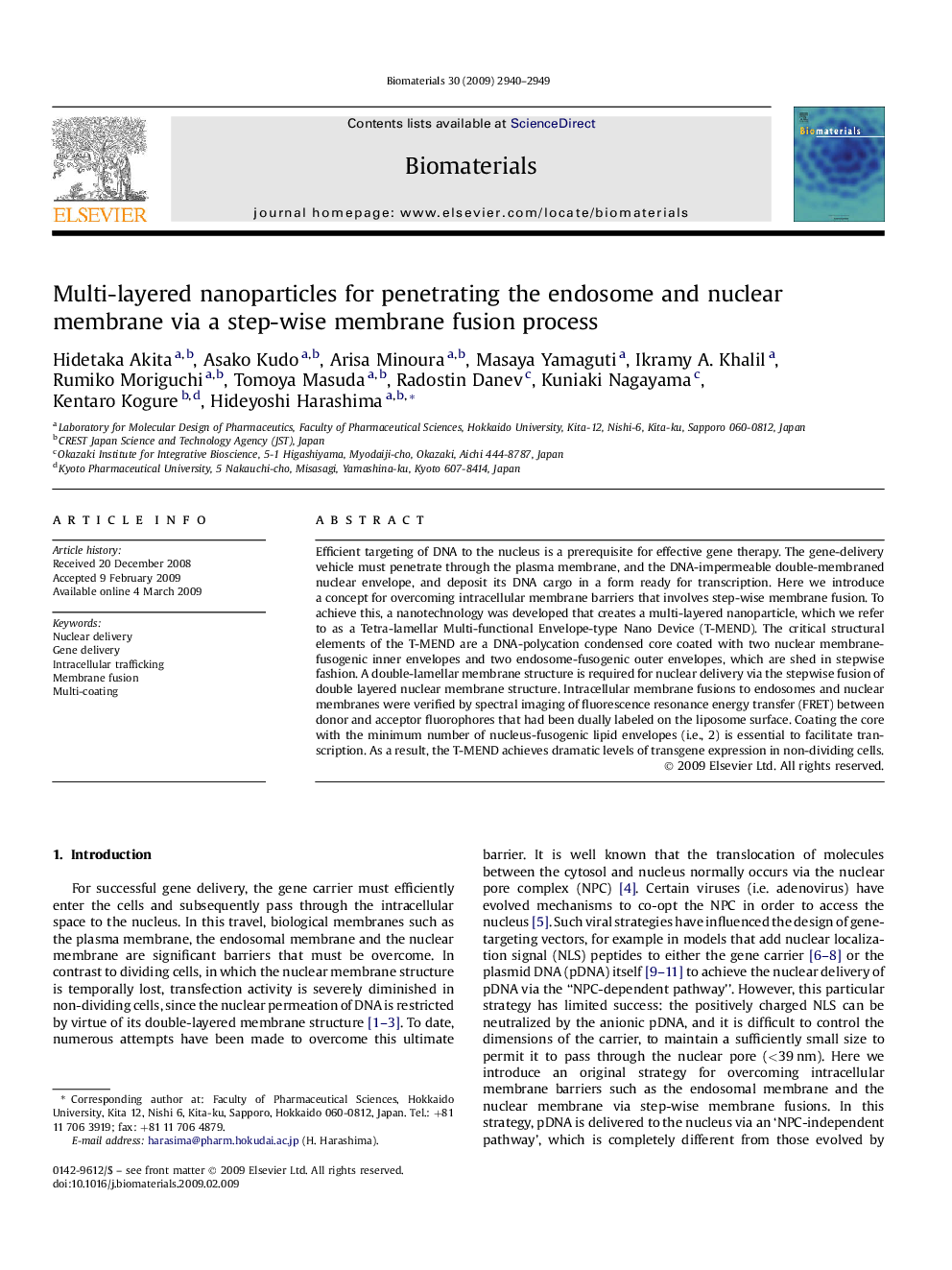| Article ID | Journal | Published Year | Pages | File Type |
|---|---|---|---|---|
| 10088 | Biomaterials | 2009 | 10 Pages |
Efficient targeting of DNA to the nucleus is a prerequisite for effective gene therapy. The gene-delivery vehicle must penetrate through the plasma membrane, and the DNA-impermeable double-membraned nuclear envelope, and deposit its DNA cargo in a form ready for transcription. Here we introduce a concept for overcoming intracellular membrane barriers that involves step-wise membrane fusion. To achieve this, a nanotechnology was developed that creates a multi-layered nanoparticle, which we refer to as a Tetra-lamellar Multi-functional Envelope-type Nano Device (T-MEND). The critical structural elements of the T-MEND are a DNA-polycation condensed core coated with two nuclear membrane-fusogenic inner envelopes and two endosome-fusogenic outer envelopes, which are shed in stepwise fashion. A double-lamellar membrane structure is required for nuclear delivery via the stepwise fusion of double layered nuclear membrane structure. Intracellular membrane fusions to endosomes and nuclear membranes were verified by spectral imaging of fluorescence resonance energy transfer (FRET) between donor and acceptor fluorophores that had been dually labeled on the liposome surface. Coating the core with the minimum number of nucleus-fusogenic lipid envelopes (i.e., 2) is essential to facilitate transcription. As a result, the T-MEND achieves dramatic levels of transgene expression in non-dividing cells.
